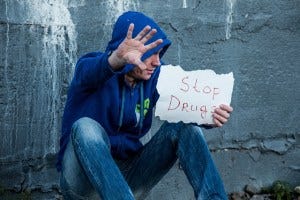Addiction is the repeated involvement with a substance or activity, despite the substantial harm it now causes because it was pleasurable.
Addiction is a family problem, so the individual with the addiction is not necessarily the most important in the recovery process. The person with the addiction is the center of attention in the family. One of the most perplexing problems in the family is that some members enable the individual with the problem to continue to abuse alcohol or drugs by supplying them with the money to purchase the substance. The enablers believe they are helping the substance abuser by preventing them from living on the streets or illegally getting money. Sometimes, there is a complete denial of the problem. In this context, the word denial means the inability to know that there is a problem.
Characteristics of Codependency
Following are some commonly used characteristics of codependency.
Sometimes the codependent is a father, mother, husband, or wife. The codependent needs or wants certain things from the addicted individual, such as
Wanting to be liked or loved.
Seeking approval
Believes they can relieve the pain of the substance abuser.
Needs to protect the person who depends on the substance
Will put their interests aside for the substance-dependent person
The codependent puts aside their own for their future for the sake of the addicted person
The codependent is driven by the fear of rejection and
the fear of anger
There is a great need to feel safe in the relationship
It’s important to emphasize that the codependent person is unaware of these behaviors and denies drug or alcohol addiction.
The addictions
The problem with using any of these substances to self-medicate is that, while there is a temporary, good feeling, people feel sick and depressed more than before. For example, after drinking all night, most people feel very ill with their hangovers the next day. Sometimes, people will drink all day. This strategy to self-medicate does not work. And the users are not conscious of the fact that they are self-medicating.
Among the addictions is the opioid epidemic. It has reached terrible proportions. The question is the why of alcohol and drug abuse. One recent factor contributing to drinking and drug abuse was the pandemic, which isolated people in their homes. Drinking and drug abuse became coping mechanisms for loneliness and isolation. People could not go to work. They were often sent home to work on computers connected to the office, creating the environment necessary to spread addiction.
Many young people abuse alcohol and opioids because they feel isolated. But their isolation is no longer because of the pandemic. The problem is that these young people sit in front of their electronic devices. That alone is isolating. That isolation leads to loneliness, and loneliness leads to addiction in young people. There is also increasing depression among young people. It becomes a vicious cycle where these young people feel lonely and abused drugs or alcohol, which causes them to feel more depressed. What is alarming is that this is causing increased suicide among our teenagers.
A contributing factor to the sense of isolation felt both by young and old alike is the decrease in altruism in our culture. Altruism involves acting selflessly for the benefit of others. It can have a meaningful impact on those around you. Altruistic behavior links to many benefits, like improved emotional well-being and physical health. Altruism involves engaging in selfless acts for the pleasure of it. An example of altruism is a person giving their jacket and shoes to a homeless person.
Many have written about a decline in empathy and a rise in narcissism. Narcissism is a self-centered personality style characterized as having an excessive preoccupation with oneself and one’s own needs.
Concern and care for other people’s feelings are lacking in many adult people today. It’s become each man for himself.





